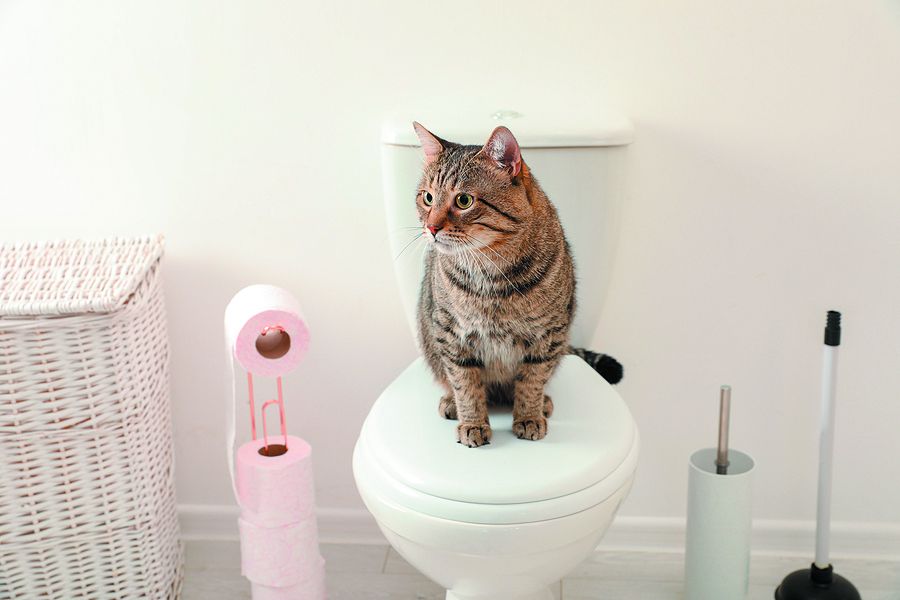Prevent Clogs and Damage: Don't Flush Cat Poop Down Your Toilet - Professional Recommendations
Prevent Clogs and Damage: Don't Flush Cat Poop Down Your Toilet - Professional Recommendations
Blog Article
Each person is bound to have his or her own perception involving Can You Flush Cat Poo or Litter Down the Toilet?.

Intro
As feline owners, it's necessary to be mindful of how we dispose of our feline pals' waste. While it may appear convenient to flush cat poop down the bathroom, this practice can have detrimental effects for both the setting and human health.
Ecological Impact
Purging feline poop presents damaging virus and bloodsuckers right into the water supply, posing a substantial risk to marine ecological communities. These pollutants can negatively influence aquatic life and compromise water top quality.
Health Risks
Along with environmental problems, purging feline waste can additionally posture health and wellness risks to humans. Feline feces might consist of Toxoplasma gondii, a bloodsucker that can trigger toxoplasmosis-- a possibly serious ailment, specifically for pregnant females and individuals with damaged immune systems.
Alternatives to Flushing
The good news is, there are safer and more responsible means to throw away pet cat poop. Think about the complying with alternatives:
1. Scoop and Dispose in Trash
The most usual method of throwing away cat poop is to scoop it right into a naturally degradable bag and throw it in the trash. Make sure to utilize a devoted clutter scoop and take care of the waste immediately.
2. Usage Biodegradable Litter
Go with naturally degradable pet cat litter made from products such as corn or wheat. These clutters are environmentally friendly and can be securely gotten rid of in the garbage.
3. Hide in the Yard
If you have a backyard, take into consideration burying feline waste in an assigned location far from vegetable gardens and water sources. Make certain to dig deep enough to avoid contamination of groundwater.
4. Mount a Pet Waste Disposal System
Purchase a pet waste disposal system particularly created for cat waste. These systems utilize enzymes to break down the waste, lowering odor and ecological impact.
Verdict
Liable pet possession extends past providing food and sanctuary-- it also entails proper waste monitoring. By avoiding flushing pet cat poop down the commode and choosing different disposal techniques, we can lessen our ecological impact and protect human health and wellness.
Why Can’t I Flush Cat Poop?
It Spreads a Parasite
Cats are frequently infected with a parasite called toxoplasma gondii. The parasite causes an infection called toxoplasmosis. It is usually harmless to cats. The parasite only uses cat poop as a host for its eggs. Otherwise, the cat’s immune system usually keeps the infection at low enough levels to maintain its own health. But it does not stop the develop of eggs. These eggs are tiny and surprisingly tough. They may survive for a year before they begin to grow. But that’s the problem.
Our wastewater system is not designed to deal with toxoplasmosis eggs. Instead, most eggs will flush from your toilet into sewers and wastewater management plants. After the sewage is treated for many other harmful things in it, it is typically released into local rivers, lakes, or oceans. Here, the toxoplasmosis eggs can find new hosts, including starfish, crabs, otters, and many other wildlife. For many, this is a significant risk to their health. Toxoplasmosis can also end up infecting water sources that are important for agriculture, which means our deer, pigs, and sheep can get infected too.
Is There Risk to Humans?
There can be a risk to human life from flushing cat poop down the toilet. If you do so, the parasites from your cat’s poop can end up in shellfish, game animals, or livestock. If this meat is then served raw or undercooked, the people who eat it can get sick.
In fact, according to the CDC, 40 million people in the United States are infected with toxoplasma gondii. They get it from exposure to infected seafood, or from some kind of cat poop contamination, like drinking from a stream that is contaminated or touching anything that has come into contact with cat poop. That includes just cleaning a cat litter box.
Most people who get infected with these parasites will not develop any symptoms. However, for pregnant women or for those with compromised immune systems, the parasite can cause severe health problems.
How to Handle Cat Poop
The best way to handle cat poop is actually to clean the box more often. The eggs that the parasite sheds will not become active until one to five days after the cat poops. That means that if you clean daily, you’re much less likely to come into direct contact with infectious eggs.
That said, always dispose of cat poop in the garbage and not down the toilet. Wash your hands before and after you clean the litter box, and bring the bag of poop right outside to your garbage bins.
https://trenchlesssolutionsusa.com/why-cant-i-flush-cat-poop/

As a person who reads about Can You Flush Cat Poo or Litter Down the Toilet?, I was thinking sharing that chunk was a good thing. Are you aware of somebody who is fascinated with the subject? Be sure promote it. Thank you for taking the time to read it.
Click Here Report this page